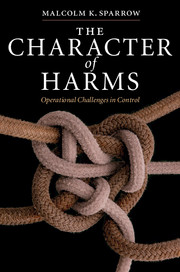11 - Harms in equilibrium
from Part II - Special categories of harms
Published online by Cambridge University Press: 06 July 2010
Summary
Normally one expects to be able to chip away at harms, gradually, piece by piece, incrementally shifting the world from a harmful state to some other, less harmful, state; many small efforts accumulating to substantial effect. But some harms present an equilibrium condition, and resist such treatment. They behave like a ball bearing sitting at the bottom of a depression: give it a little nudge, and it merely settles back to its original position. The forces of gravitation, coupled with the shape of the terrain, pull it back to where it was. In response to a perturbation, the ball bearing may wobble around for a while at the bottom of its hole; but without a substantial shove it will eventually settle again in precisely the same position.
Equilibrium positions can be either stable or unstable. A single domino stood on its end is unstable, because a relatively small nudge will make it fall right over. For the purposes of this discussion, it is the stable equilibrium positions that concern us, where forces at work naturally tend to counteract small perturbations. In order to move the ball bearing from a position of stable equilibrium to a different position, and have it remain there, you first have to deliver a significant nudge, sufficient to get it out of and away from its current equilibrium position.
- Type
- Chapter
- Information
- The Character of HarmsOperational Challenges in Control, pp. 231 - 242Publisher: Cambridge University PressPrint publication year: 2008



